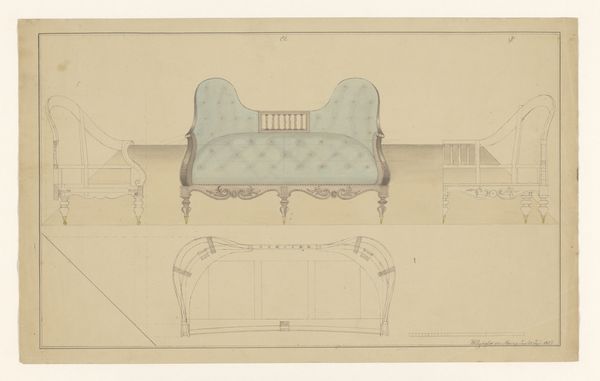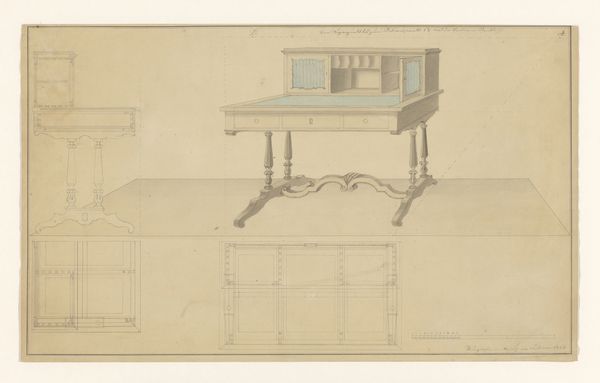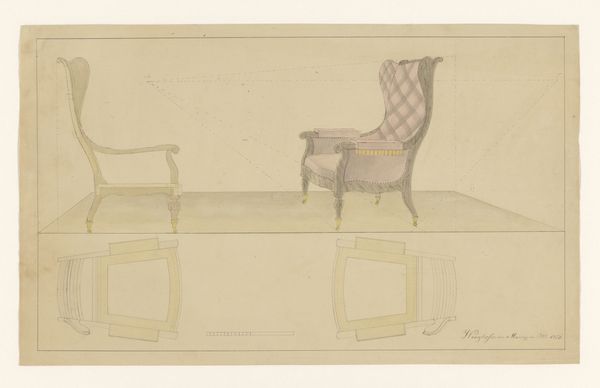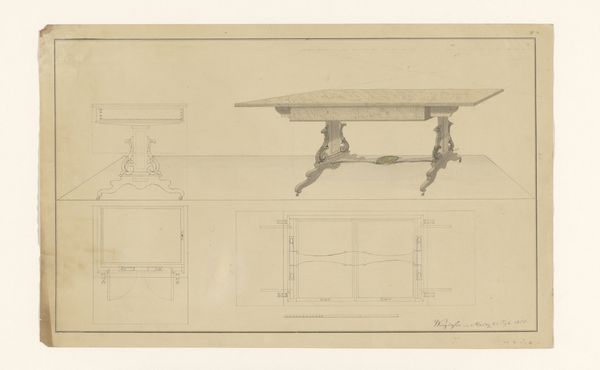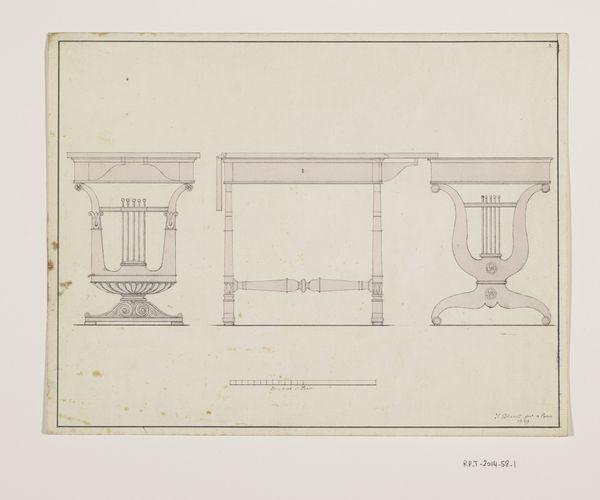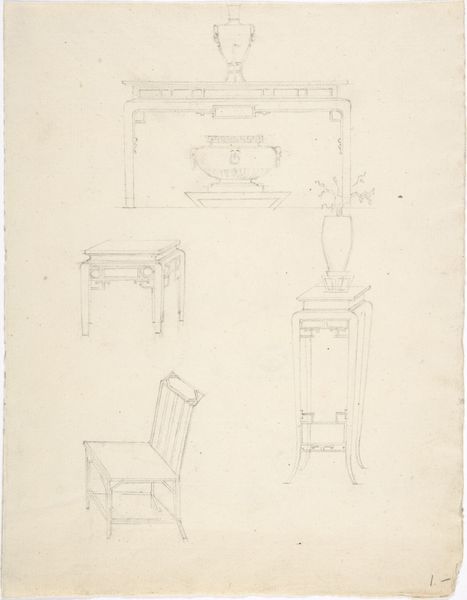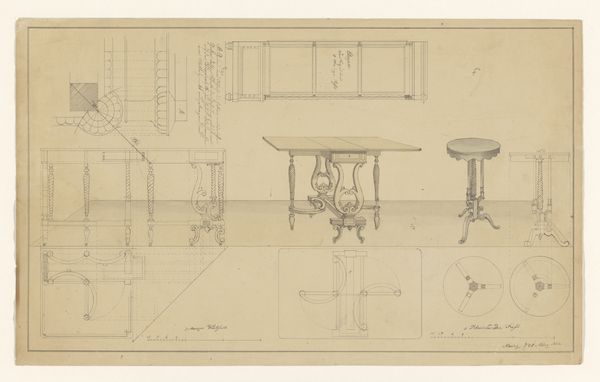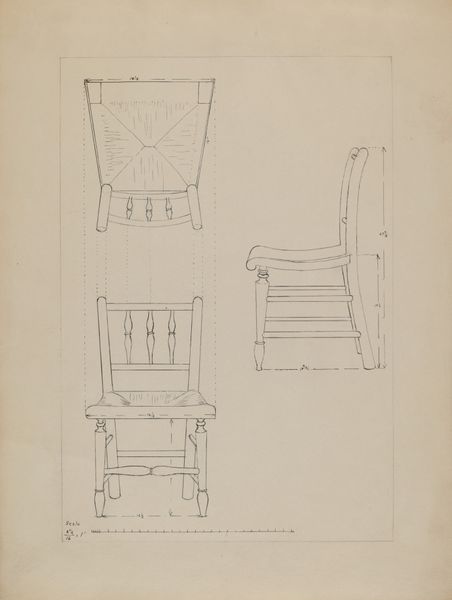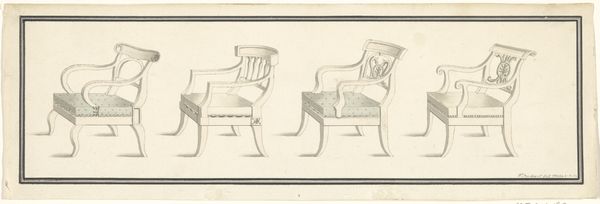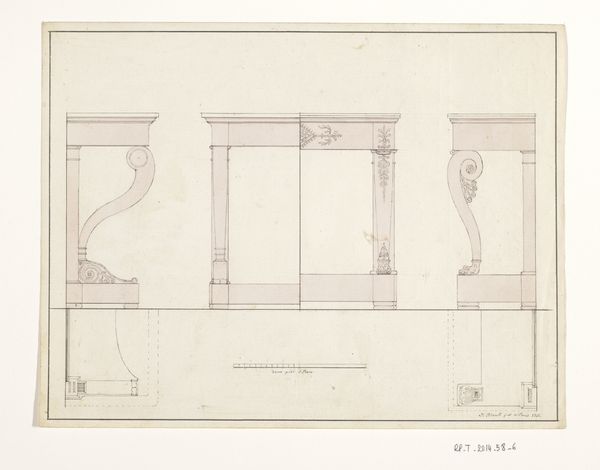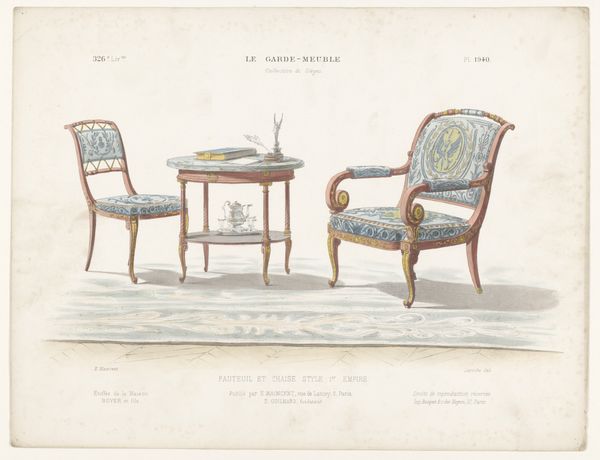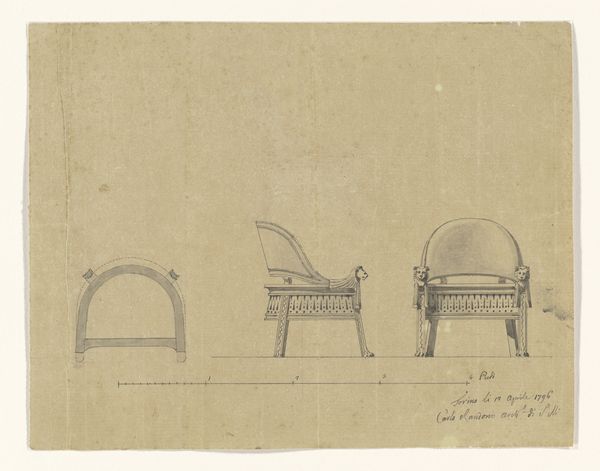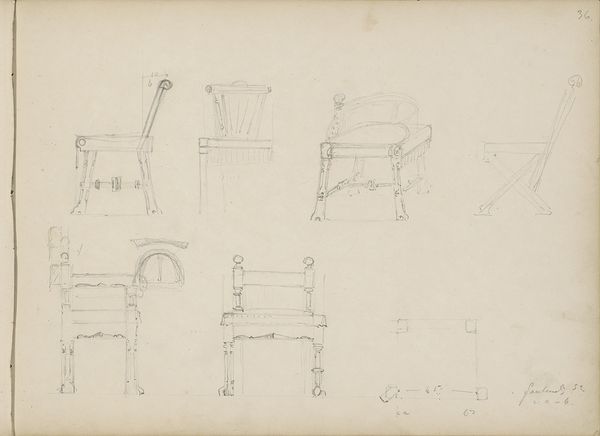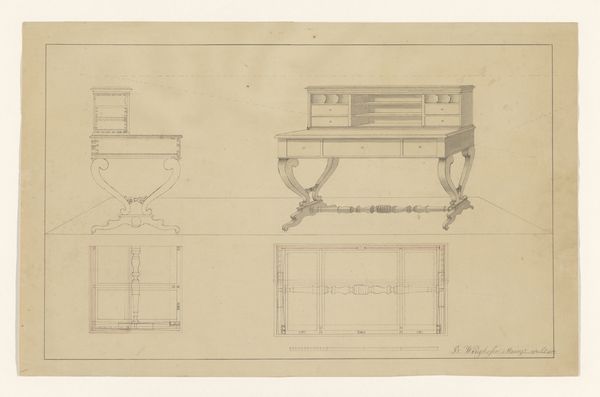
Ontwerp voor een beklede armstoel met verstelbare rug en uitklapbare zitting, met zijaanzicht en plattegronden onder beide aanzichten 1851
0:00
0:00
drawing, paper, pencil
#
drawing
#
aged paper
#
toned paper
#
light pencil work
#
ink paper printed
#
old engraving style
#
paper
#
form
#
personal sketchbook
#
ink drawing experimentation
#
geometric
#
pencil
#
line
#
sketchbook drawing
#
watercolour illustration
#
academic-art
#
sketchbook art
Dimensions: height 274 mm, width 452 mm
Copyright: Rijks Museum: Open Domain
Curator: This is a design study from 1851 titled "Ontwerp voor een beklede armstoel met verstelbare rug en uitklapbare zitting, met zijaanzicht en plattegronden onder beide aanzichten," or Design for an upholstered armchair with adjustable back and folding seat, with side view and plans under both views, created by B. Winghofer. The medium used here is drawing, a combination of pencil and ink on paper. Editor: My initial impression is one of quiet practicality. The drawing has a sense of measured calm, typical of technical illustrations, but the chair itself suggests a consideration for the sitter's comfort. It is a design that promises ease. Curator: Absolutely, but I think we need to dig deeper into the social implications of such a design. Armchairs in this period were symbols of domestic comfort accessible to specific demographics. An adjustable, folding chair amplifies that idea of ease; think of the social role of leisure, of having the time and means to recline. Editor: A reclining figure certainly speaks volumes about cultural values attached to comfort. Beyond the social commentary, however, the chair itself presents an interplay of sharp lines defining its structure juxtaposed with these more flowing, baroque-inspired armrests and legs. What symbolic vocabulary can we extract from the forms at play? Curator: That’s a good point about visual vocabulary and its historical links. The curvaceous flourishes perhaps hint at aspirations beyond mere function, to communicate status, wealth, and perhaps a link to aristocratic lineages in an emerging industrial era. The functionality versus ostentation reflects the tension inherent in Victorian design, balancing progress with tradition. Editor: There is certainly a yearning for established visual codes—a reaching back, shall we say? And the aged tone of the paper contributes another layer of historical weight; it prompts a dialogue about how we memorialize, interpret, and perhaps, even imbue nostalgia onto the past. Curator: Right! The "old engraving style" impression underscores our constant re-evaluation of earlier historical contexts, and our inclination to aesthetically frame that past. It really is about how the meaning of comfort itself gets re-negotiated with the changing times and social norms. Editor: Indeed. This image does far more than present a chair; it presents a silent chronicle of evolving values that speak even today. Curator: Agreed, reflecting on this sketch is itself an exercise in uncovering not just the lines of design but the lines of historical meaning.
Comments
No comments
Be the first to comment and join the conversation on the ultimate creative platform.
